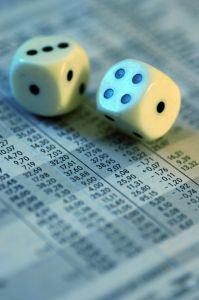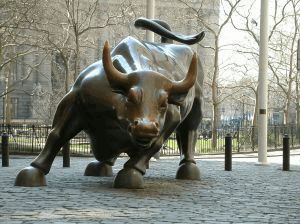Speculating about the Nobel
by Chris Buzzard Next week, we can expect the winner to be announced for this year's Nobel Prize in Economics. (Last year, the Aplia Econ Blog posted an article about the previous winner, Edmund S. Phelps.) This weekend will see lots of speculation over who will take the prize. Proving there's a market for everything, Intrade posted its odds on this year's prospective Nobel laureates, and allows speculators to bet on who they think will win (thanks to Greg Mankiw for finding this site). The early favorite on Intrade (though trading has been extremely light) is the University of Chicago's Eugene Fama. Truth be told, Professor Fama is my favorite for this year's Nobel (at least, my favorite non-Aplian!).
Next week, we can expect the winner to be announced for this year's Nobel Prize in Economics. (Last year, the Aplia Econ Blog posted an article about the previous winner, Edmund S. Phelps.) This weekend will see lots of speculation over who will take the prize. Proving there's a market for everything, Intrade posted its odds on this year's prospective Nobel laureates, and allows speculators to bet on who they think will win (thanks to Greg Mankiw for finding this site). The early favorite on Intrade (though trading has been extremely light) is the University of Chicago's Eugene Fama. Truth be told, Professor Fama is my favorite for this year's Nobel (at least, my favorite non-Aplian!).It's a challenging matter determining how to judge academics relative to each other, especially when they may publish in significantly different fields. The number of citations an academic receives is probably the gold standard for measuring performance in academia. An author receives a citation when a later author recognizes the original author's work as contributing to the later author's own research. This site seeks to objectively measure economists' citations, but applies a weighting scheme to control for individually authored papers relative to co-authored papers and for the time elapsed since papers were cited. Eugene Fama also resides at the top of this list (though a lot of us at Aplia think number 21 on the list deserves a good look too).
Professor Fama has made major contributions to the finance field with his work on market efficiency and asset pricing. He is regarded by many as the father of the efficient market hypothesis. In the early 1990s, he published a series of papers with Kenneth French in which they challenged the Capital Asset Pricing Model's assertion that a stock's market beta is the primary determinant of variations in stock returns. They argued that the market and its participants are too complex to be encapsulated by a single factor. In an article entitled "The Cross-Section of Expected Stock Returns," they developed a three-factor model that tried to explain stock returns using two observed anomalies. They incorporated the fact that small companies tend to outperform big companies, while value stocks (with higher book/market ratios) tend to outperform growth stocks (with lower book/market ratios). Since the paper's publication, Fama-French's three-factor model has become a fundamental evaluation tool in the portfolio management industry.
Discussion Questions
1. Why is an economist's number of citations a relevant measure for his or her impact on the field?
2. The citation list weights recent citations more heavily than older ones. Why might this distinction be relevant when judging an academic?
3. Are markets efficient?
4. There have been a few times in stock-market history when crashes (huge stock-price declines) occurred, such as the stock-market crashes of 1929 and 1987 and the burst of the Internet bubble. What would an analyst who believes in market efficiency say to explain these events?
Labels: Efficiency, Finance, Nobel Prize, Stock Market





